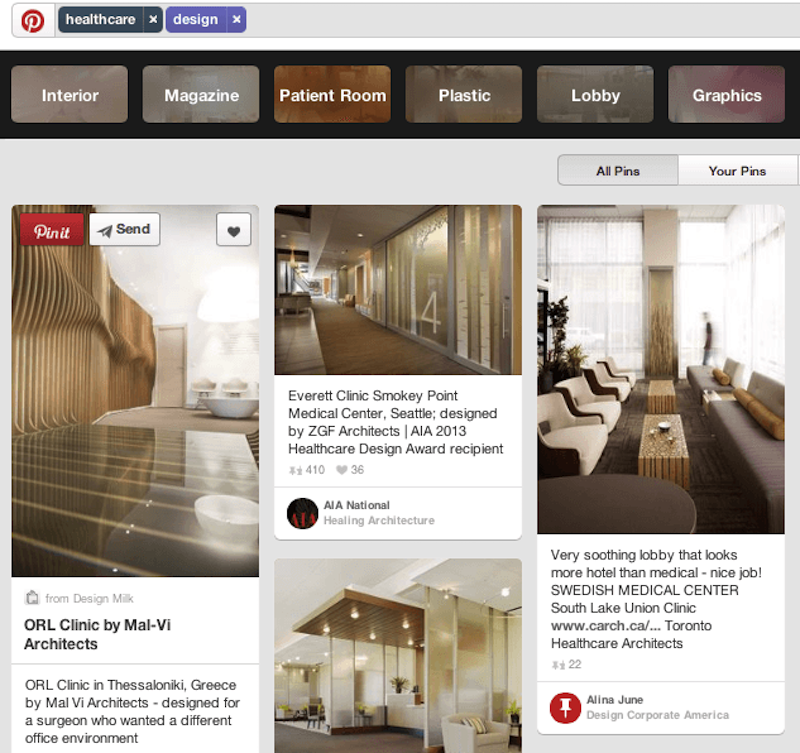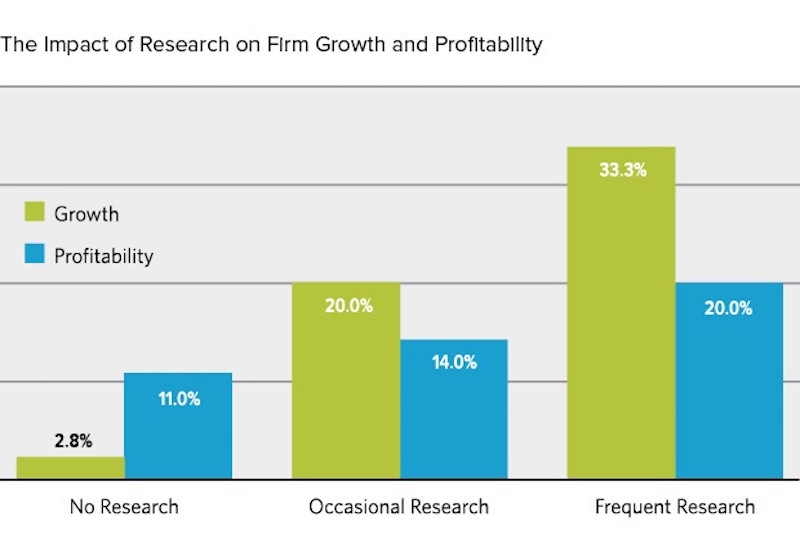You’ve done brand research, nailed down a solid marketing strategy, and are making an impact in the industry. But it’s important to measure the success of your strategy to make sure your architecture firm is connecting with prospects and driving new business opportunities.
Below, we’ve identified five architecture marketing tools that will help your firm evaluate if it’s on the track to more leads, higher growth, and broader brand visibility.
1. CRM
One foundational building block that helps you understand the business opportunities driven by your marketing efforts is the CRM (Customer Relationship Management).
There are so many options available that offer a wide range of automation and integration features that it can be hard to identify the best fit. Whether you choose software like Hubspot, Marketo, InfusionSoft, or an open source solution like Zoho, it is a wise investment to find a system that suits your current needs and allows you to connect your outreach efforts to prospects and clients.
Don’t be paralyzed by finding the perfect system that will last forever (there is no such thing). As long as your data is portable, you will be able to migrate or update systems down the road as you grow.
Ideally, your CRM will help you connect conversion and traffic information from social, email and online channels with real world opportunities, proposals and new business. This allows you to see how your marketing efforts are working together to support your new business pipeline.
Remember, Microsoft Outlook does not count as a CRM, though it is possible to start with Excel and a lot of elbow grease!
2. Website analytics
You can learn a lot by understanding how visitors interact with your architecture firm’s website through analytics. Google Analytics is an incredibly powerful tool that your firm can leverage with appropriate training and setup.
Once your website is properly configured, Google Analytics or other systems like CrazyEgg, Clicky, or Adobe Analytics can provide not only the raw traffic data, but dive deeper into visitor behavior and engagement patterns to help guide your content development efforts. You can help answer questions like:
- Which blog posts had the longest engagement times?
- Which paths most effectively promote a conversion to a lead (contact us)?
- Where did those visitors who came in from your latest email campaign spend their time?
- Are your blog posts optimized for the critical keywords and phrases?
Once you and your team understand how to interpret the overall analytics picture, this tool offers valuable direction on how to adjust your marketing efforts.
3. Meaningful engagement on social media
Most firms no longer question the importance of having a social media presence, but it’s important to know if you are having meaningful conversations as a result. Certainly, visibility is one major benefit of consistent social media. And when marketing architecture services, a picture is worth a thousand words (a la Pinterest). But simply talking at your clients is missing the greater opportunity of social media.

Use other tools (like your CRM backbone) to identify clients you want to engage through social media. What groups have they joined? What are they talking about? With a little bit of planning, your firm’s business development team can engage in those conversations and build another level of recognition with key clients.
There’s more evidence that supports search engines are beginning to weigh social media in search algorithms (or will very soon), so relevant discussions can have a wider impact beyond peer-to-peer visibility. Using Google Analytics to track social engagement and website patterns will help you learn the impact social media has on your firm.
SEE ALSO: 10 New Rules of Marketing Professional Services
4. Direct feedback from clients
We sometimes forget to ask clients, “Where did you find us?” And that’s not surprising considering architecture is a highly relationship driven industry.
Subtly begin to probe clients on how they found your firm. Did they find you on LinkedIn? On Pinterest? At a conference or industry event? It’s important to know the channels that helped boost your firm’s credibility so much that the prospect contacted you.
Introducing website, social media, or traditional marketing anecdotes into conversations can be an indicator to the unseen interactions that helped move the lead from a prospect to a client.
5. Regular brand research
Recent research shows that firms that do frequent research are more profitable and grow faster than firms who do occasional or no research (see the figure below). Even with all of the sophisticated tools at our disposal, periodic research on overall brand visibility will help verify that your architecture marketing efforts are continuing on the right track – and probably identify some gaps that require adjustments.

Ultimately, the great litmus test is, of course, the increase in revenue and profitability. But without these five basic tools to understand what efforts are paying the greatest dividends, you’re unable to understand the marketing efforts that are working and which need to be adjusted in order to meet those revenue goals.
More from Author
Hinge | May 22, 2023
2023 High Growth Study shares tips for finding success in uncertain times
Lee Frederiksen, Managing Partner, Hinge, reveals key takeaways from the firm's recent High Growth study.
Hinge | Dec 15, 2022
4 ways buyer expectations have changed the AEC industry
The Hinge Research Institute has released its 4th edition of Inside the Buyer’s Brain: AEC Industry—detailing the perspectives of almost 300 buyers and more than 1,400 sellers of AEC services.
Hinge | Jun 8, 2020
A time for fearlessness: Lessons from high growth AEC firms
As it turns out, one of the High Grown firms’ superpower is digital marketing.
Hinge | Apr 11, 2019
Opportunities and challenges you may face in an M&A and how to tackle them
How do mergers and acquisitions impact a firm’s brand, marketing, and business development?
Hinge | Feb 19, 2019
Strategies and tools to help navigate a successful M&A
Based on Hinge’s industry research, smaller firms typically spend a higher percentage of revenue on marketing and business development efforts for the same return.
Hinge | Jan 23, 2019
7 AEC marketing trends to watch for in 2019
As we enter into the new year, I’d like to walk through seven marketing trends that will impact AEC firms in 2019 and beyond.
Hinge | Aug 20, 2018
Marketing for engineering firms: 3 reasons to embrace the revolution
Firms who still aren’t embracing the fundamental shift away from traditional marketing techniques stand to fall further and further behind the competition.
Hinge | Jul 10, 2018
AEC marketing fundamentals can still have a role in winning new business
In our Internet-fueled world, it’s easy to get distracted by the latest online tools. But the boring stuff is still important, and you don’t want to lose sight of old-school techniques that are just as persuasive now as they were a few decades ago.
Hinge | Jun 13, 2018
How your AEC firm's brand affects recruiting top talent
There is a major shift in workforce demographics as upwards of 80 million baby boomers retire over the next fifteen years.
Hinge | Apr 27, 2018
4 reasons to pursue speaking engagements
We found speaking engagements were among the top ten marketing techniques that AEC firms employ.
















